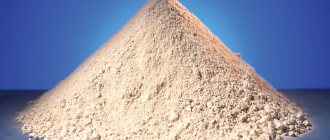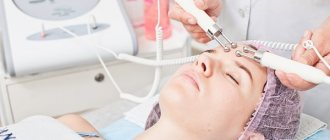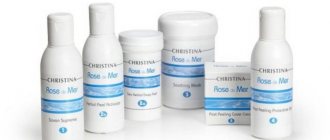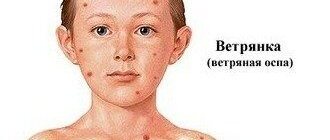The human papillomavirus (HPV) is ubiquitous and causes a wide range of benign lesions of the skin and mucous membranes, while playing an important role in the pathogenesis of malignant neoplasms, in particular squamous cell cancer of the skin, cervix, penis, areola of the mammary gland, etc. [ 12]. To date, more than 150 types of HPV have been described. According to some data, HPV infection among the adult population is 20–60% [2]. According to the Center for Infectious Disease Control (Atlanta, USA), genital warts and condylomas, the causative agents of which are various types of HPV, affect about 630 million people in the world, and the prevalence of HPV is 3 times higher than genital herpes and is not inferior to gonorrhea [4 ]. It is estimated that more than 75% of sexually active men and women have been infected with at least one type of HPV during their lifetime [3].
Diseases caused by HPV currently include warts, genital warts, epidermodysplasia verruciformis, papillomas, some precancerous diseases and forms of cancer (see above) [4]. The first two diseases are the most widespread. For example, simple warts are detected in 20% of schoolchildren, genital warts in developed countries are the most common sexually transmitted diseases [1], and among patients seeking help in gynecological clinics, 44.3% of women are infected with HPV [1, 5, 9].
In connection with the above, the search for effective methods of treating patients with HPV infection is an urgent problem for all countries of the world.
Today, practitioners have many methods for treating diseases caused by HPV, such as anogenital warts. The effectiveness of these treatment approaches varies from 30 to 90%, but none of them can be considered optimal, since the relapse rate even with the most modern methods is 15–20%. It has been established that the inclusion of immunostimulating drugs in the complex of treatment measures increases the effectiveness of therapy, although it does not completely solve the problem [6–9].
The purpose of this study was to evaluate the effectiveness and safety of including the immunostimulating and antiviral drug Isoprinosine (inosine pranobex) in standard complex therapy for patients with warts and genital warts.
Material and methods
The study included 78 patients, including 47 men and 31 women. In 3 patients, common warts were detected, in 6 – palmoplantar warts, in 3 – flat warts, in 66 – genital warts (see table).
. Nosological composition and gender of patients.
Inclusion criteria:
- clinically verified diagnosis of warts or genital warts;
- age 3 years and older;
- availability of informed consent to participate in the study of the patient or his parents. Exclusion criteria:
- urolithiasis, cardiac arrhythmia, renal failure, pregnancy and lactation;
- age up to 3 years;
- individual intolerance to Isoprinosine.
Criteria for the effectiveness of treatment (recovery):
- complete resolution of all elements of the rash;
- no relapses during the observation period (9 months).
The largest group – 66 (84.6%) people – were patients with genital warts. They were distributed by age as follows: up to 17 years old – 6, 18–20 years old – 16, 21–25 years old – 19, 26–30 years old – 9, 31–35 years old – 11, 36–40 years old – 4, 41–50 years – 1 patient. Thus, 50 patients (75.8% of the total number in the group) became infected before the age of 30 years. Married (10 people) and married (15 people) in this group made up 37.9%. Fifteen patients (22.7%) had previously received treatment for genital warts (Cycloferon, Allokin-alpha, Feresol, cryodestruction), but they developed a relapse. Of the concomitant diseases in the group, trichomoniasis (19 people - 28.8%), gonorrhea (2 people - 3.0%), chlamydia (8 people - 12.1%), vaginal candidiasis (13 people - 19.7%) were identified. .
As part of the complex treatment, cryodestruction of rashes was used (using the Azocryod apparatus); Isoprinosine (Teva) 1000 mg (2 tablets) 3 times a day after meals in combination with the local cytotoxic drug podophyllotoxin (Condilin).
For common and flat warts, cryodestruction of the elements was carried out on the 5th day while taking Isoprinosine for 10 days.
For palmoplantar warts (out of 6 patients, four had previously received laser therapy - 1, cryodestruction - 1, feresol - 2), cryodestruction of elements was carried out on the 5th day while taking Isoprinosine for 10 days, then after an 8-day interval another one was performed 10-day course of treatment (the lesions were lubricated with Panavir gel after treatment).
For genital warts, cryodestruction was performed while taking isoprinosine: three 5-day cycles at monthly intervals.
The duration of general observation of patients was 9 months.
results
In patients with common and flat warts, there were no relapses after treatment (efficacy - 100%); out of 6 patients with palmoplantar warts, a relapse occurred in 1 patient (efficacy - 83.4%), he was given an additional course (cryodestruction + Isoprinosine), after which a clinical cure occurred.
Among patients with genital warts, 3 people did not appear for a follow-up examination after the course of treatment, and of the remaining 63 patients, complete clinical cure was achieved in 59 cases (efficacy - 93.6%). Relapses were registered in two women during pregnancy and in two patients who admitted casual unprotected sex after treatment. As a result of an additional course of complex treatment, they achieved clinical recovery.
The overall effectiveness of treatment in the entire group of observed patients who completed the study (75 people) was 93.3%.
Treatment was generally well tolerated: of the total number of patients, 1 (1.3%) patient complained of nausea, and 2 (2.7%) complained of lethargy and drowsiness. Isoprinosine discontinuation was not required in any of the cases. There were also no changes in routine blood tests, urine tests, uric acid levels, transaminases and creatinine.
conclusions
- The inclusion of Isoprinosine in the complex treatment of patients with common, palmoplantar, flat warts and genital warts ensured recovery of the vast majority of patients (93.3%).
- Treatment with Isoprinosine is well tolerated; rare adverse events (in 4% of patients) do not require discontinuation of the drug.
- Isoprinosine therapy in combination with destructive treatment methods can be recommended for diseases caused by HPV, primarily for patients with genital warts.
Information about the authors: Alexey Yuryevich Rodin – Doctor of Medical Sciences, Professor, Head of the Department of Dermatovenerology, Volgograd State Medical University. Tel. 36-13-88, E-mail; Zaklyakova Tatyana Nikolaevna – deputy chief physician of the Krasnooktyabrsky dermatovenous dispensary in Volgograd
Isoprinosine
Immunostimulating agent with nonspecific antiviral effect. It is a complex containing inosine and a salt of 4-acetamidobenzoic acid with N,N-dimethylamino-2-propanol in a molar ratio of 1:3.
The effectiveness of the complex is determined by the presence of inosine; the second component increases its availability to lymphocytes.
Restores the functions of lymphocytes in conditions of immunosuppression, increases blastogenesis in the population of monocytic cells, stimulates the expression of membrane receptors on the surface of T-helper cells, prevents a decrease in the activity of lymphocyte cells under the influence of glucocorticoids, and normalizes the inclusion of thymidine in them.
Isoprinosine has a stimulating effect on the activity of cytotoxic T-lymphocytes and natural killer cells, the functions of T-suppressors and T-helpers, increases the production of IgG, interferon gamma, interleukins (IL)-1 and IL-2, reduces the formation of pro-inflammatory cytokines - IL-4 and IL-10 potentiates the chemotaxis of neutrophils, monocytes and macrophages.
Shows antiviral activity in vivo against Herpes simplex viruses, cytomegalovirus and measles virus, human T-cell lymphoma virus type III, polioviruses, influenza A and B, ECHO virus (human enterocytopathogenic virus), encephalomyocarditis and equine encephalitis.
The mechanism of antiviral action is associated with inhibition of viral RNA and the enzyme dihydropteroate synthetase, which is involved in the replication of some viruses.
Enhances the synthesis of lymphocyte mRNA suppressed by viruses, which is accompanied by suppression of the biosynthesis of viral RNA and translation of viral proteins, increases the production of alpha and gamma interferons by lymphocytes, which have antiviral properties
Reduces the clinical manifestations of viral diseases, accelerates convalescence, and increases the body's resistance.
When used as an auxiliary drug for infectious lesions of the mucous membranes and skin caused by the Herpes simplex virus, the affected surface heals more quickly than with traditional treatment. New blisters, swelling, erosions and relapses of the disease occur less frequently. With timely use of inosine pranobex, the incidence of viral infections decreases, the duration and severity of the disease decreases.
Pharmacokinetics
After oral administration, it is quickly and almost completely (> 90%) absorbed and has good bioavailability. When taken orally at a dose of 1500 mg, the Cmax of inosine pranobex is achieved after 1 hour and is 600 mcg/ml. Not detectable in the blood 2 hours after administration.
Inosine pranobex consists of inosine and the salt of p-acetamidobenzoic acid with N,N-dimethylamino-2-propanol. Each of the components of inosine pranobex is rapidly metabolized. Almost 100% of metabolites are detected in urine within 8 to 24 hours after administration.
Inosine undergoes metabolism in a cycle typical of purine nucleotides, producing uric acid, the concentration of which in the blood serum may increase. As a result, uric acid crystals may form in the urinary tract.
The increase in uric acid concentration is nonlinear and can vary by ±10% within 1-3 hours after ingestion. As a result of the metabolism of p-acetamidobenzoic acid, o-acyl glucuronide is formed; N,N-dimethylamino-2-propanol is metabolized to N-oxide.
AUC of p-acetamidobenzoic acid >88%, AUC of N,N - dimethylamino-2-propanol >77%. No accumulation was detected in the body.
Isoprinosine
Isoprinosine is an immunostimulating drug that has an antiviral effect. It is effective in the treatment of ARVI and influenza, chickenpox, herpes, cytomegalovirus, papilloma, measles, hepatitis B and C and the Epstein-Barr virus.
The drug is used to prevent complications after stress, injury and surgery to strengthen the immune system. The dosage and duration of taking Isoprinosine is determined by the doctor. Usually prescribed 2 tablets three times a day after meals, washed down with water.
The course lasts 2-4 weeks and is repeated after 1 month. The drug is contraindicated for children under three years of age.
Isoprinosine for HPV
Human papillomavirus is the most common sexually transmitted disease. About 20 million people worldwide are infected with it. This disease contributes to the development of benign and malignant tumors of the genital organs and rectum. Almost all cases of cervical cancer are caused by HPV.
There is an opinion that this disease cannot be cured and it will recur all the time. It is not true. To treat diseases associated with HPV, drugs are used that suppress the reproduction of viral RNA and DNA and stimulate weakened immunity.
These two effects are exerted by the drug Isoprinosine, manufactured by the Israeli company Teva. The action of this drug is aimed at the ribosomes of the affected cell, changing its structure and thereby suppressing the replication of DNA and RNA-containing viruses.
Isoprinosine is a non-toxic drug that does not have immunogenic, mutagenic, allergenic, carcinogenic or embryotoxic effects. In 77% of cases, patients are completely cured of HPV with complex therapy.
Isoprinosine and alcohol
Is it possible to take alcohol together with Isoprinosine? Formally, it is possible, since the instructions for the drug do not say anything about this, but in essence it needs to be clarified. The drug is used for influenza, measles, and chickenpox. Alcohol is prohibited for these diseases, as it can provoke an exacerbation and deterioration of the condition with serious consequences.
The second point - the instructions state that when taking the medicine for a long time, laboratory monitoring of the condition of the liver is necessary. This means that the medicine negatively affects this, and possibly other organs. And the liver of a drinking person is significantly different from the liver of a healthy person.
Accordingly, pathological reactions may develop from this organ. And the third reason why you should not drink alcohol with Isoprinosine is the fact that the drug increases the body’s production of interferons, which in turn increase the toxic effects of alcohol.
This means that when taking interferons and alcohol, treatment will end in severe depression and the development of psychopathologies, and possibly death.
Information content of the site: Dmitry N.
Name:
Isoprinosine
Pharmachologic effect:
Isoprinosine is a synthetic complex purine derivative with immunostimulating activity and nonspecific antiviral effect.
Restores the functions of lymphocytes in conditions of immunosuppression, increases blastogenesis in the population of monocytic cells, stimulates the expression of membrane receptors on the surface of T-helper cells, prevents a decrease in the activity of lymphocyte cells under the influence of glucocorticosteroids, and normalizes the inclusion of thymidine in them.
Isoprinosine has a stimulating effect on the activity of cytotoxic T-lymphocytes and natural killer cells, the functions of T-suppressors and T-helpers, increases the production of immunoglobulin (lg) G, interferon-gamma, interleukins (IL)-1 and IL-2, reduces the formation of pro-inflammatory cytokines - IL-4 and IL-10, potentiates the chemotaxis of neutrophils, monocytes and macrophages.
The drug exhibits antiviral activity in vivo against viruses:
- Herpes simplex. - Cytomegalovirus. - Measles virus. - Human T-cell lymphoma virus type III. - Polioviruses. - Influenza A and B. - ECHO virus (human enterocytopathogenic virus). - Encephalomyocarditis.
- Equine encephalitis.
The mechanism of the antiviral action of Isoprinosine is associated with the inhibition of viral RNA and the enzyme dihydropteroate synthetase, which is involved in the replication of some viruses, enhances the synthesis of lymphocyte mRNA suppressed by viruses, which is accompanied by suppression of the biosynthesis of viral RNA and the translation of viral proteins, increases the production of alpha and gamma interferons by lymphocytes with antiviral properties. When administered in combination, it enhances the effect of interferon-alpha, the antiviral agents acyclovir and zidovudine.
Indications for use:
- - viral infections caused by herpes simplex virus types 1 and 2, varicella zoster virus, cytomegalovirus, Epstein-Barr virus, measles virus, mumps virus, including in patients with - immunodeficiency conditions; - viral respiratory infections; - papillomavirus infections of the skin and mucous membrane: genital warts, papillomavirus - infection of the vulva, vagina and cervix (as part of complex therapy); - acute viral encephalitis (as part of complex therapy); - viral hepatitis (as part of complex therapy);
- — subacute sclerosing panencephalitis (as part of complex therapy).
Mode of application:
The drug is prescribed orally . The daily dose depends on body weight, the course and severity of the disease, and the patient’s condition. Adults and children over 12 years of age: 50 mg/kg body weight (6-8 tablets, divided into 3-4 doses), maximum daily dose - 4 g.
Children aged 1 year to 12 years : 50 mg/kg body weight (1 tablet per 10 kg body weight for a child weighing 10–20 kg, for a body weight >20 kg, prescribe the dose as for adults), distributed over 3-4 doses per day, maximum daily dose - 4 g. To make swallowing easier, the tablet can be crushed.
Duration of treatment Acute diseases: for diseases with a short-term course, the course of treatment ranges from 5 to 14 days. After the severity of the symptoms of the disease has decreased, treatment should be continued for another 1–2 days or longer, depending on the course of the disease and the patient’s condition.
Viral diseases with a long course: treatment should be continued for 1–2 weeks after the severity of the symptoms of the disease has decreased or longer, depending on the course of the disease and the patient’s condition.
Recurrent diseases : at the initial stage of treatment, the same recommendations apply as for acute diseases. During maintenance therapy, the dose can be reduced to 500–1000 mg (1–2 tablets) per day.
When the first signs of relapse appear, it is necessary to resume taking the daily dose recommended for acute diseases and should continue for 1-2 days after the symptoms disappear.
The course of treatment can be repeated several times if necessary and depending on the patient’s condition on the recommendation of a doctor.
Chronic diseases: use the drug at a dose of 50 mg/kg body weight according to the following regimens:
- - asymptomatic diseases - take for 30 days with a break of 60 days; - diseases with moderately severe symptoms - take for 60 days with a break of 30 days; - diseases with severe symptoms - take for 90 days with a break of 30 days. The course of treatment should be repeated as many times as necessary, with constant monitoring of the patient’s condition and indications for prolongation of therapy; - for infections caused by the human papillomavirus (external genital warts (genital warts) or papillomavirus infection of the cervical canal), take according to 3 g (2 tablets 3 times a day) for 14–28 days, as monotherapy or as an addition to local therapy or surgical treatment according to the following regimens:
- a) for the treatment of low-risk patients (patients with normal immunity or patients with a low risk of relapse), the drug is used for 14–28 days until maximum eradication of the virus is achieved, then a break should be taken for 2 months. The course of treatment can be repeated using the same dose, but it is necessary to constantly monitor the patient’s condition and to prolong therapy;









